Are you looking for a cost-effective solution to expand your storage space, or to start a container home project? In this article, we’ll explore all the details related to purchasing a shipping container and answer the question “how much for a shipping container“. So get ready to explore the world of shipping and storage containers – you might be surprised by what you find!
Introduction – Shipping and Storage Containers
Shipping containers have many potential uses, including providing portable storage, secure shelter and building materials for DIY projects, and even as the core framework for a container home. Before you begin the purchasing process, familiarize yourself with the advantages and disadvantages of particular types of containers and use our pricing details to make an informed decision. Whether you are searching for a used shipping container, a cargo container to modify for your own home, workplace or business, or just for additional outdoor storage, understanding the types available in the market and how much they cost can help make sure you get the most bang for your buck. Read on to get started!
Types of Shipping Containers and Container Sizes
When it comes to choosing a shipping container, there are a variety of types available to fit different needs. Depending on the type and size you require, shipping container prices vary greatly. The type (ie. new or used, 20 ft or 40 ft, chilled etc.) and where you want to have the shipping container delivered, or the logistics service requirements, delivery fees and transportation distances will also affect cost. Here is a quick overview of various types of containers and their basic features:
- Dry Shipping Containers: These are the most common containers used to transport cargo and international shipments, and they travel to every port in the world, and come in various sizes. Standard dry containers measure 20 feet or 40 feet in length with container dimensions of 8 ft 6 inch wide. There are different height versions of containers available as well, though standard containers are built at L40′ x W8′ x H8’6″ with interior dimensions of L39’5″ x W7’8″x H7’10” – or about 300 square feet of internal space. They can hold up to 28,000 kg (29 tons) net max payload, and are around 8000 pounds when empty. High-Cube containers typically have an additional foot of space, with other dimensions being equal, but a height of 9 feet 6 inches. Dry containers provide highly secure storage since they can be locked shut with your own padlocks or seals during transit, as they ship cargo around the world, and securing them is a necessity. Shipping container doors typically have a width and hight of W7’8″ x H7’5″.
- Reefers: Reefer or refrigerated containers have temperature controlled systems that regulate temperatures from -25°C to +25°C (-13°F to +77°F). This makes them ideal for transporting perishable goods or items that require specific environmental conditions for optimal quality control when shipping cargo overseas, or regionally. Reefers are typically used for shipments that involve chilled goods supply such as food products, pharmaceuticals, flowers or plants. Standard reefer sizes range from 20 foot and 40 foot lengths with the same 8’6” width dimensions as dry freight models offering plenty of room for cargo without the need for multiple units.
- Open Top Containers: As the name implies these look just like dry shipping containers with an open top instead of a fixed roof allowing tall cargo items to be loaded easily like machines, furniture etc.. Open top models also come with optional pvc covers that provide weather protection when/if required during transit while still allowing you to use the full interior volume on offer within each freight unit itself.
- Flat Rack Containers: Referred to as platform containers too; Used mainly when goods don’t fit inside standard height container walls either due dimensions (length / height), weight , configurations etc. – Available in 20 & 40ft container versions; Containers come in folding versions that are also available, which after delivery can have the walls folded upwards to offer additional space and flexibility – great for oversized/overweight goods, or other scenarios where such features could be useful. Flat racks can also be installed, or strengthened (boasted) and equipped to handle heavier loads.
Factors Influencing Shipping Container Prices
Wondering how much containers cost, and what can influence the price? Read on!! The cost of containers and purchasing a shipping container can vary greatly depending on several factors – for example, whether you are buying a new or used shipping container, and weather it was used to transport goods that could potentially require you to substantially refurbish and/or sanitize the unit. Understanding the differences between new, used and modified containers is essential to make an informed decision, and assist in knowing how much do shipping containers cost. The differences may seem obvious, but knowing how a container was used, what types of materials were shipped in it, and how many times it was used transporting cargo overseas, will have a significant impact on price. Additionally, a range of other elements such as location, size and delivery will play a role in the final cost of shipping containers.
New Containers: New containers provide the best protection against damage or theft during storage or transit and are also the most economical for long-term rentals. Containers are usually recently manufactured, and last for a long time. The price of a 20ft standard shipping container will usually cost around $1,700 – $3,000 depending on your location and supplier, and usually does not included shipping costs. New 40-foot containers, in contrast, have an average cost of around $4,900, and can cost anywhere from $4000 to $5500, depending on your location and vary depending on whether you are near a major port, where the cost of the shipping container may be lower.
Used Containers: Used containers are those taken from decommissioned fleets or retired cargo ships which have been in service longer than two years. They can offer savings of up to 50 percent compared to the price of a new container but may show some signs of wear and tear such as rusting probably due to exposure to salty sea air while at sea. Therefore they may not be suitable for certain types of goods requiring protection from harsh weather conditions so it’s important to check what kind of condition they’re in before making your purchase. Prices usually range from $1,200 – $2,500 with delivery factored into the cost if required.
Modified Containers: Prefabricated metal boxes equipped with brand new lockable doors or additional features like electric power supply are referred to as modified containers. Even though these units look just like a new unit their prices vary greatly depending on individual requirements; hence it’s difficult to predict what you might pay for an exact cost estimate without consulting an engineer first since significant customization could add significant costs depending on the size and complexity get complete specification when shopping around.. Price variations go anywhere between $3,000 -$7000 including full installation costs where applicable such as turn-key ready mobile clinics/offices etc.
Costs to Rent a Shipping Container
Renting a shipping container can be an economical way to store or transport your items. The cost of renting a container will depend on the size, location, and availability. For example, if you’re looking for a standard 40-foot shipping container in a well-populated area, you can expect to pay around $150 to $350 per month. It’s important to note that many companies require a minimum lease length of one year. Additionally, some container companies may have additional fees such as delivery costs or setup fees – it is important to always determine the cost of delivery before entering into any type of rental agreement. The shipping container industry is competitive,
It’s recommended that you shop around and compare prices between different vendors when considering renting a shipping container. To get the best deal and tailored service, check with local suppliers since they are likely to have greater availability at good rates than larger-scale companies who tend to have higher prices in specific areas due to their scope of operations.
Once you’ve picked your supplier, be sure to clarify all fees associated with the purchase before signing any contracts—this includes any administrative costs incurred during the process and the terms of early termination if needed. Knowing all costs upfront will ensure that you are getting a fair price for your rental and help avoid any unpleasant surprises down the line!
Costs to Buy a Shipping Container
The cost of buying a shipping container can vary based on size, condition, and type. If you are just buying the container to move your items, then you can typically find an 8-foot or 20-foot used container for around $2,000 -$3,000 USD. However, customized containers may cost more if additional features are desired. For example, an insulated container may cost up to $8-10K depending on the specific features and size.
When considering a budget for purchasing a shipping container it is important to consider transport costs as well. Depending on your location and how far you need the container shipped from a depot or factory there may be significant costs associated with transportation and delivery that should be factored into your budget plan before confirming a purchase.
It is always important to consider both short-term and long-term costs when making this kind of investment. While purchasing the cheapest version might seem enticing in the moment, it might not be so wise if your intended use is more permanent in nature as inferior quality containers may require more maintenance or replacements over time compared to higher quality options that might have steeper entry prices but save money in the long run by being longer lasting and better suited towards intended usage needs.
Benefits of Owning a Shipping Container
Shipping containers offer a wealth of benefits for those who need reliable and secure storage. From personal use to commercial occupation, investing in a shipping container is an efficient and affordable solution, with many features that will appeal to a variety of users.
One major plus when it comes to owning a shipping container is the simplicity of the logistics. Each unit is basically the same size and can be transported easily regardless of your location. As well as offering easy transportation, they are designed to be sturdy and secure, making them ideal for bulk storage or housing valuable items such as furniture or machinery.
Another significant benefit is that they can be very cost-effective due to their ability to house large volumes of goods or materials at once which helps significantly reduce costs associated with manual handling. Cost effectiveness isn’t only limited to transport but also storage in terms of its rentable nature, granting users flexible terms for their occupation; so you can rent for just the length of time you need it without tying yourself into long contracts. Additionally, containers are manufactured from durable steel that’s built to last offering excellent value for money even when paired up against more traditional forms of storage such as steel warehouses or garages.
Finally, if used correctly shipping containers offer low levels of shrinkage compared with more conventional forms of storage due to its highly secure nature; making security a primary benefit for owners – essential if you’re storing expensive items in bulk during transit around the globe!
Potential Uses for Standard Shipping Containers
Shipping containers are used in a variety of industries and applications, from short-term storage to international transportation. For example, the U.S. military has relied on them for overseas deployments, while many construction companies use them to store their supplies and equipment during long-term projects. Business owners can also benefit from the purchase of a cargo container as it helps store inventory without requiring extra space or costly overhead costs such as rental rates or upkeep expenses. In more recent times, they have been used to make shipping container homes, which have proven to be attractive options for many designers and home owners. Containers have incredibly flexible use cases,
In addition to providing secure and weatherproof storage solutions for a variety of applications, containers can be converted into unique and desirable living arrangements such as micro apartments, small homes, guest bedrooms or studio workspaces. It’s even possible to move both residential and commercial container constructions from place to place with relative ease since these structures are self-contained units that don’t need building permits or specific city zoning requirements in most cases. The possibilities for these types of movable constructions are virtually vast, including accommodations for students in college communities or overflow housing needs in urban areas.
Conclusion – Shipping Container Cost
In conclusion, the cost of purchasing a shipping container will depend on many factors, such as the size, condition, and number of containers that you intend to purchase. In addition, many shipping companies and freight forwarders offer a variety of used and new shipping containers for sale at competitive prices.
If you are looking for a more affordable option than buying from a retailer or manufacturer, there are many online sources available with comprehensive options to explore. Ultimately, it is important to weigh your needs with your budget when making your determination on which container is best for you.
For some other great articles on home improvement, home improvement how-tos, prefab homes and other simple living and lifestyle projects, check out some of our other articles on Lifestyle and Home Design, and learn more about some great solutions and inspirations. Also be sure to check out all of our articles on Backyard Bunkies, Garden Houses and Sheds, and all the various inspirations that we’ve highlighted at TAG Level.








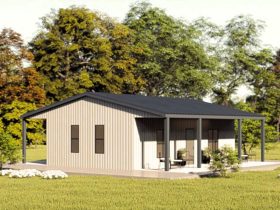

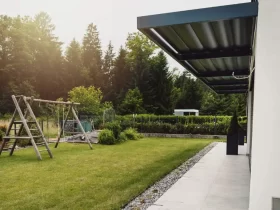

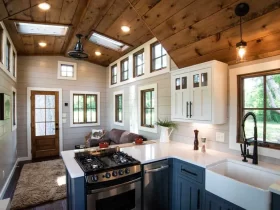





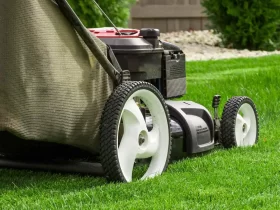

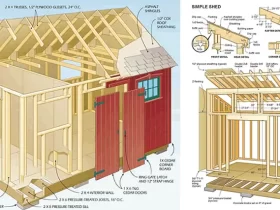
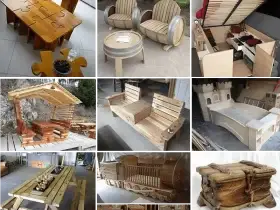

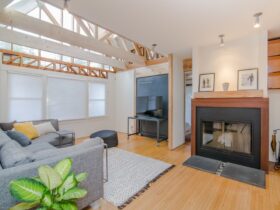



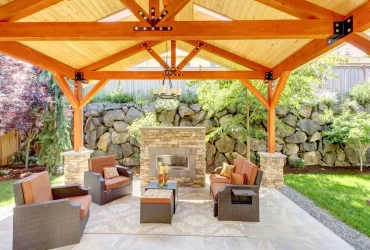

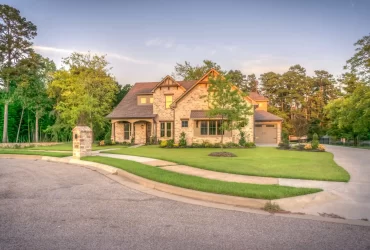
Leave a Reply